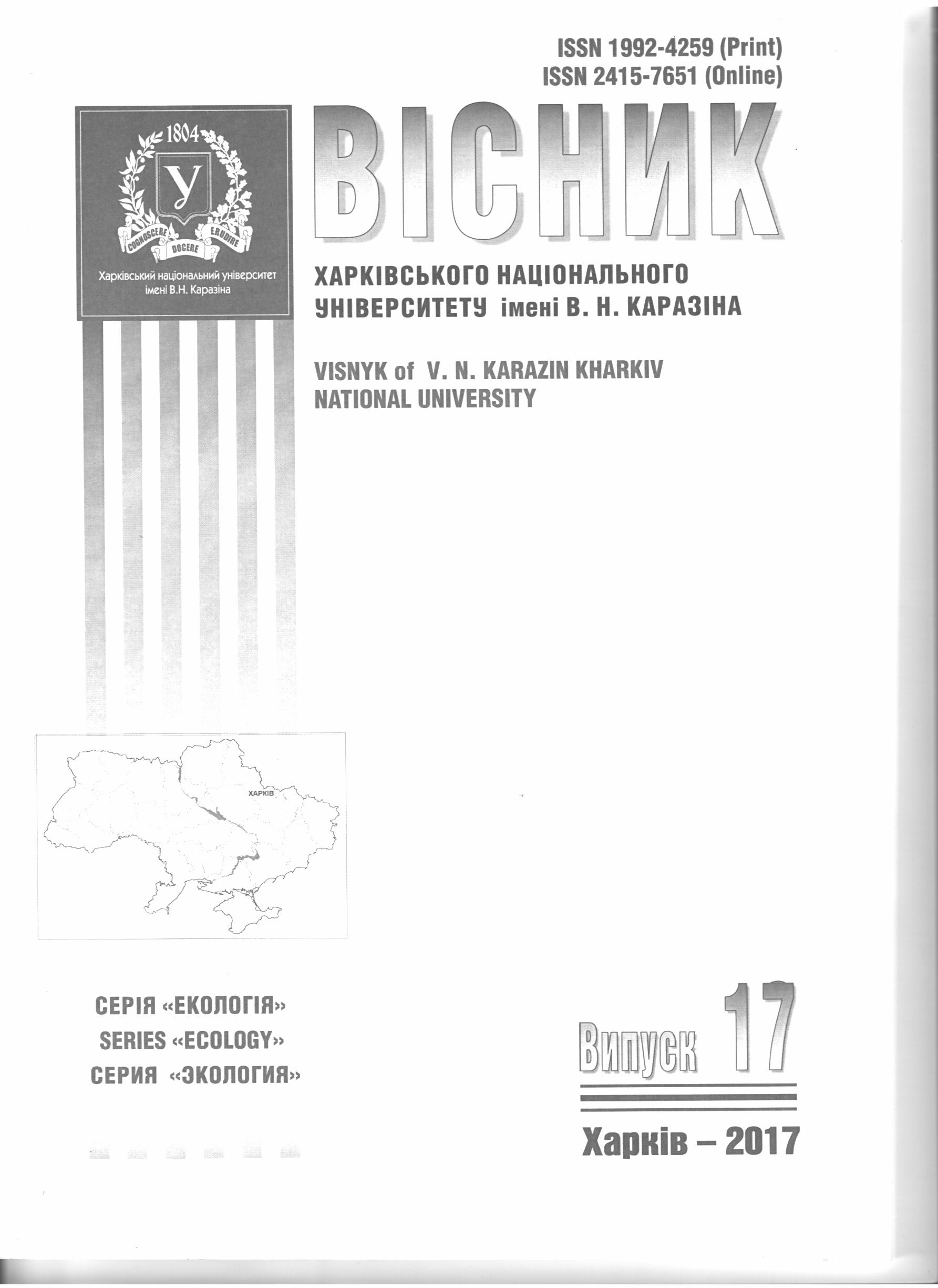Spatial characteristics of waste management in the "city-suburban" system
Abstract
Goal. To establish the dependence of the formation of unauthorized dumps of solid household waste with spatial features and socio-economic factors. Methods. Field, statistical data processing. Results. As a result of inventory of landfills of waste related to urban areas. Babai and s. Zatyshne 23 objects were discovered. Each object is analyzed in accordance with a number of criteria designed to optimize waste accumulation and disposal processes in suburban areas. On the basis of the analysis, all objects are classified and grouped into groups for a number of common features. The conducted analysis and classification of landfills enable to give a clear linking of objects to the spatial features within which they were formed. In addition, the analysis of the socio-economic component gives an idea of the context of the formation of landfills, the features of their further growth and morphological composition. On the basis of the analysis, four zones of risk of the formation and development of unauthorized waste landfills are allocated. Risk zones are allocated on the basis of the number of formed landfills, their area and the dynamics of growth. Conclusions dedicated areas of risk of the formation and growth of unauthorized dumps give the opportunity to build an effective system of environmental management and a program of sanitary clearing of territories. Binding landfill to spatial features and socio-economic factors allows for forecasting and subsequent control, which will be aimed at stopping the formation of new objects. Important in this approach is the concept of "individuality" of populated areas, since identified risk areas for one group of settlements, may be irrelevant for the next territorial cluster of management.
Downloads
References
2. Перцик Е.Н. Геоурбанистика : учебник для студ. высш. учеб. заведений . М. : Издательский центр «Академия», 2009. 432 с.
3. Безлюбченко О.С., Завальний О. В., Черноносова Т. О. Планування і благоустрій міст : навч. посібник. для студентів усіх форм навчання та слухачів другої вищої освіти за напрямом підготовки 0921 (6.060101) – «Будівництво», Харк. нац. акад. міськ. госп-ва. Х. : ХНАМГ, 2011. 191 с.
4. Наказ Міністерства будівництва, архітектури та ЖКГ України від 05.04.07 № 121 «Правила з технічної експлуатації полігонів твердих побутових відходів». URL: http://www.uazakon.com/documents/date_6s/pg_gewcov.htm
5. Краснянский М.Е. Утилизация и рекуперация отходов. Харьков: Бурун Книга, 2007. 265с.
6. Державні санітарні правила та норми ДСанПіН 2.2.7. 029-99. URL: http://dei.gov.ua/menyu-4/2012-01-22-11-28-44/1298-sanpin-gigiyena.html
7. Державні будівельні норми України. Проектування. Полігони твердих побутових відходів. Основні положення проектування. ДБН В.2.4-2 2005. URL: http://profidom.com.ua/v-2/v-2-4/1703-dbn-v-2-4-2-2005-poligoni-tverdih-pobutovih-vidkhodiv-osnovni-polozhenna-projektuvanna
8. Любешкина Е. Г. Твердые бытовые отходы. Проблемы и решения. Ресурсосберегающие технологии : Экспресс-Информ. ВИНИТИ. 2002. № 24. С. 3-7.
9. Пинаев В. Е. Проблемы загрязнения окружающей среды твердыми отходами. Вестн. Моск. ун-та. Сер. 6, Экономика. 2003 . №4. С. 92-106.
10. Плаксицкая И. П. (Кремнева И. П.). Косинова И. И. Классификация полигонов отходов и экологическая безопасность территории. Экология ЦЧО РФ . 2008 . № 1-2. С. 54-62.
11. Гуман О. М. Экологический мониторинг на полигонах твердых бытовых и промышленных отходов. Записки Горного института. Проблемы современной инженерной геологии. Санкт-Петербург, 2003. С.58-60.
12. Кахнич П.Ф., Причинно-наслідкові зв’язки землекористувань з екологічною ситуацією в приміських зонах. Інженерна геодезія. 2003. Вип. № 49. С.141-151.
13. Кахнич П.Ф., Основні принципи формування та оцінки приміських територій. Вісник НУВГП . Рівне: НУВГП, 2006. №1. С.194-200.
14. Кахнич П.Ф., Формування приміських територій крупних та великих міст. Праці міжн. конф. “Геоінформаційний моніторинг навколишнього середовища”.Алушта. 2005. С.102-107.
15. Тітенко Г.В., Широкоступ С.М., Підходи до вирішення проблеми видалення твердих побутових відходів в системі екологічного менеджменту територій. Людина та довкілля. Проблеми неоекології. 2017 . №1-2 (27) С. 136-142.
Authors who publish with this journal agree to the following terms:
- Authors retain copyright and grant the journal right of first publication of this work under the terms of a license Creative Commons Attribution License 4.0 International (CC BY 4.0).
- Authors are able to enter into separate, additional contractual arrangements for the non-exclusive distribution of the journal's published version of the work (e.g., post it to an institutional repository or publish it in a book), with an acknowledgement of its initial publication in this journal.
- Authors are permitted and encouraged to post their work online (e.g., in institutional repositories or on their website) prior to and during the submission process, as it can lead to productive exchanges, as well as earlier and greater citation of published work.





